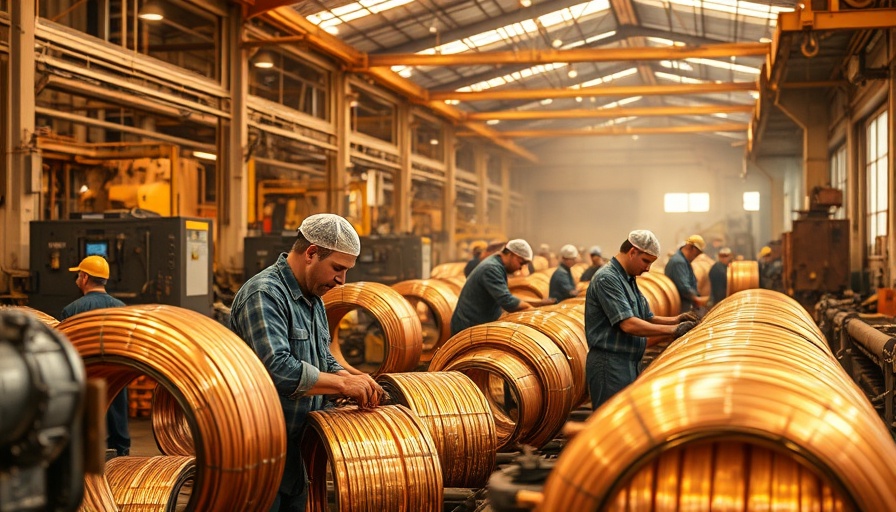
Why Copper is at the Heart of Renewable Energy
Copper has long been heralded as a symbol of strength and resilience, essential for various industries ranging from electronics to construction. However, as we pivot towards a greener future, copper's importance has escalated dramatically within the realm of renewable energy. The International Energy Agency (IEA) has recently highlighted potential shortages as demand surges for this indispensable metal due to its critical role in the green energy transition.
Understanding the Impending Copper Shortage
The IEA's Global Critical Minerals Outlook 2025 paints a troubling picture: by the year 2035, we could see a 30% shortfall in copper supply. A perfect storm of decreasing ore grades, rising costs, and a lack of new mines threatens to derail the clean energy aspirations of nations worldwide.
Upon examining the reasons for this anticipated shortfall, we uncover a pattern mirrored across various critical minerals—declining ore quality and an increasing concentration of production in a few global hotspots. With the top three producers capturing a staggering 86% market share, the vulnerability of supply chains to shocks—such as extreme weather or geopolitical disruptions—becomes glaringly apparent.
Why Action is Imperative
As humanity strives to combat climate change, projections reveal a need for copper demand to grow by 1 million metric tons annually. The challenge, however, lies in our ability to meet this demand sustainably. Fortunately, the report cautions that while shortages are possible, they are not inevitable. Government intervention through proactive policies, innovative technologies, and international collaboration holds the key to stabilizing supply and fostering resilience in these critical mineral supply chains.
What This Means for Social Equity and Sustainability
Beyond the economic implications, the potential shortages of copper and other minerals raise important social questions. Communities that depend on stable supply chains may find themselves disproportionately affected by price volatility. The call for diversified sourcing not only serves industry needs but also promotes social equity and environmental justice—creating opportunities for communities globally to contribute to and benefit from the green transition.
Call for Innovation: The Road Ahead
Addressing this looming crisis demands critical thinking and innovation at every level—from meticulous sourcing practices to efficient recycling methodologies. Increased public awareness and continued advocacy for sustainable practices will amplify this call to action. It is not just the responsibility of governments and industries; individuals and communities also play a crucial role in pushing for change.
In conclusion, as demand for critical minerals like copper continues to rise in our quest for renewables, the responsible management and diversification of supply chains will determine our success. Together, let’s advocate for policies and practices that ensure a sustainable and equitable future for all.
 Add Row
Add Row  Add
Add 



 Add Row
Add Row  Add
Add 

Write A Comment